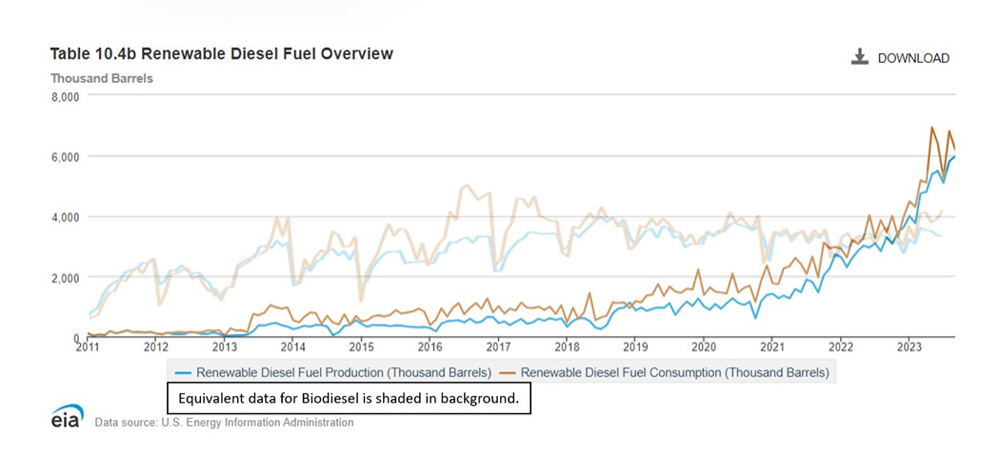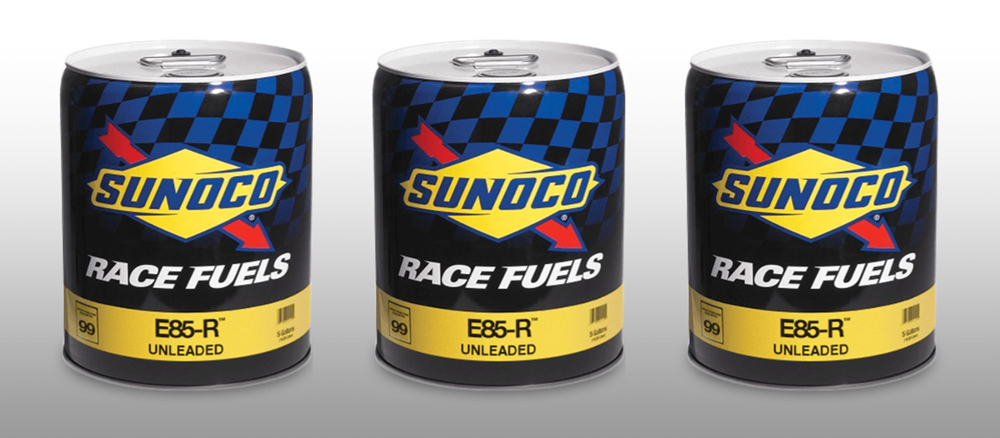PRI Tech: Alternative Fuels in Motorsports

Timeline of ethanol introduction to US gasoline market.
The term “alternative fuels” has been used in headlines for the past few decades as the world searches for a new method of producing fuels to power our lives. Crude oil provides an economical solution for transportation, but it brings carbon molecules from underground and releases them into the environment. Many fuel providers and race series, as well as government agencies, are focusing on the challenge of developing a technology that powers our vehicles without altering the composition of our planet’s atmosphere. This is why almost every recent headline regarding racing fuel has been focused on communicating a sustainable message.
The fact that the racing industry is included in the search for sustainable energy is a compliment to the unrivaled creativity inherent to the sport. This creativity spawns from intense competition and the everlasting spirit of racers who push boundaries and drive technology forward. This article will cover the history of alternative fuels used in the US as well as define the next generation of diesel and ethanol products becoming more available for racing and transportation vehicles.
Alternatives to Tradition
The history of alternative chemicals that have been tested in internal combustion engines focuses on racing fuels and the wide adoption of ethanol in gasoline and biodiesel in diesel. Alcohols, ethers, esters (biodiesel), and nitromethane could all be considered alternative fuels compared to traditional gasoline and diesel. These alternative products have been around for decades in racing and are even favored by many different categories. While these alternative fuels meet the demands of racing, they do not address the challenges of the US transportation sector or allow for a sustainable environment.
The addition of ethanol and biodiesel have helped shift the fuel source away from solely relying on subsurface carbon. Additionally, these biofuels recycle some of the carbon that is currently in the atmosphere. As seen in the graph at top left, from 2000 to 2010, ethanol production ramped up and became widely utilized at up to 10% in gasoline.
Both the top and bottom graphs show how ethanol and biodiesel production have plateaued, indicating stalled progress in reducing carbon emissions from fuels. Conversely, renewable diesel production has doubled year over year for three years running. When deciding which direction the industry will shift, the key is not only the chemical compounds themselves, but how they are produced.
Renewable Diesel
How is renewable diesel different from biodiesel? Renewable diesel is made from vegetable or animal fats that are heavily refined and purified into a very narrow cut of synthetic diesel that can be a drop-in replacement at 99% usage in fuels. Many refiners have fully switched from crude oil processing to animal/vegetable fat processing so they can support markets where low carbon emissions are valued.

Renewable diesel is being favored over biodiesel because it can be used as a drop-in replacement for diesel without the gelling troubles that plague biodiesel. Renewable diesel also has a high “cetane rating,” which gives the fuel a shorter ignition delay from when the fuel is injected to when it combusts and offers better tuning for performance applications. The cetane rating of renewable diesel is in the 70–75 range, much higher than the EPA minimum of 40 for crude diesel. This alternative fuel is attractive because heavy industries (aviation, trucking, shipping) are less likely to be electrified in the near future.
Low Carbon Intensity Ethanol
Low carbon intensity ethanol is an example of how changing the production method of a particular chemical can also reduce the impact on the environment. Also known as “second generation” or “cellulosic ethanol,” low carbon intensity ethanol has the same fuel specification as traditional ethanol; therefore no changes are needed for current vehicles. Low carbon intensity ethanol is made from breaking down cellulose from corn stalks and leaves into sugars that can be fermented into ethanol. Using the parts of the corn that would otherwise be burned or sent to a landfill helps reduce the carbon intensity of this ethanol. It will deliver the same performance benefits as typical corn starch ethanol when used in fuels like E85. Starting in 2024, Sunoco has adopted low carbon intensity ethanol in the manufacturing of its race fuels such as E85-R.

The next generation of fuel is upon us with low carbon intensity versions of ethanol and renewable diesel becoming available in certain markets. When combusted, they still have similar emissions to their first-generation counterparts; however, the way they are produced has a lower impact on the environment. Each pathway to produce the fuels is different due to variables in gathering feedstocks, processing methods, and transportation of finished fuels. These products can reach up to 65% reduction in life-cycle carbon emissions when compared to gasoline or diesel. While these fuels are not perfect, they are available currently, and many companies and municipalities are selecting them. This has led to a demand for low carbon fuels that outpaces the production capacity in the US and signals a growing alternative to electric vehicles.
Racing continues to offer a canvas for testing new ideas that reward performance, power, and reliability. New fuels are always welcome to be tested, as the next generation of low carbon fuels promises a more sustainable product alongside performance readiness.
Zachary Santner is the Manager of Product Engineering for Sunoco Performance Products, providing high octane specialty fuels to the largest racing series as well as the enthusiast market. Mr. Santner is a resource to the automotive aftermarket and holds a degree in chemical engineering and a master’s degree in business administration.
Sources
Alternative Fuels Data Center
afdc.energy.gov/fuels/renewable_diesel.html
U.S. Energy Information Administration
eia.gov/totalenergy/data/browser/index.php?tbl=T10.04B#/?f=M
 MEMBERSHIP LOGIN
MEMBERSHIP LOGIN JOIN PRI
JOIN PRI


